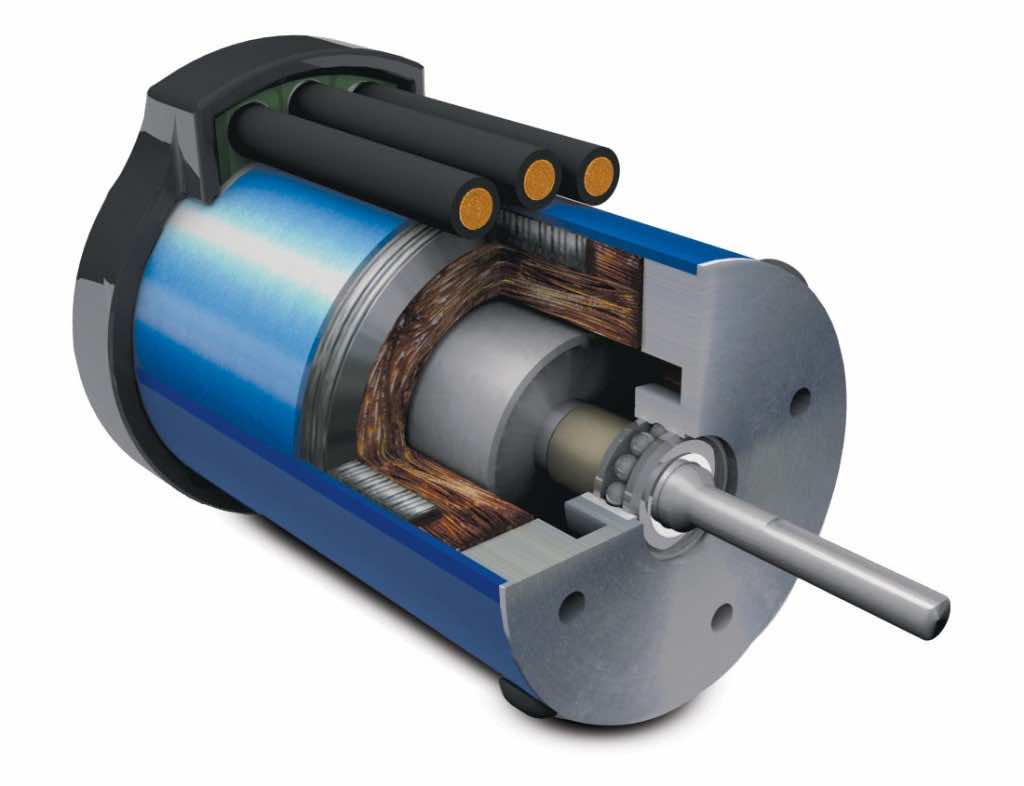Introduction
Simply put, an electric motor can be defined as a machine that converts electrical energy into mechanical energy. The first electric motors date back to 1740s when Scottish monk Andrew Gordon created electrostatic devices. Peter Barlow created the first rotating device that was driven by electromagnetism back in 1822 and named it Barlow’s Wheel. The first real electric motor based on rotation, however, is credited to German speaking Prussian Moritz Jacobi back in May 1834. Walter Baily demonstrated the first induction motor back in 1879.
How Does A Motor Work?
As mentioned, the electric motor relies on electromagnetism. Upon placement of a coil carrying current (rectangular coil) in a magnetic field, a torque is generated that acts on the coil and forces it to rotate continuously. The rotation of coil can drive the shaft attached to it, therefore, completing mechanical work. In short, the rotational motion is because of magnetic pulling and repelling.
Types of Motors
DC Motors
A DC motor works by employing two windings and two permanent magnets. The electromagnets are provided current and they are pulled and repelled by the permanent magnets resulting in the motion of motor. Types of DC motors are stated below:
Shunt Motor
This particular type has the rotor and the stator windings connected in parallel.
Separately Excited Motor
Different power sources are employed for the rotor and stator.
Series Motor
This particular type has the rotor and stator windings connected in series and provides the highest torque per current ratio as compared to other DC motors.
Permanent Magnet DC (PMDC)
This particular motor is small in size since the stator is a permanent magnet.
Compound Motor
This particular type of motor has rotor connected to the stator via compound of series and shunt windings.
AC Motors
An AC motor is comprised of two basic parts; a stationary stator located outside with coils that are being supplied AC current in order to create a rotating magnetic field and the second component being the rotor located inside that is attached to the output shaft that is being provided the torque by virtue of rotating field. Types of AC motors are stated below:
Induction Motors
There are no brushes in this type since the voltage is being induced in the rotor and hence the name; induction motors.
Synchronous Motor
This particular type includes rotor that attempt to become synchronous with the magnetic field (rotating) in the stator.
Other Motors
Motors other than AC and DC motors are categorized as follows;
Stepper Motor
This particular type is a special case of synchronous motors and with each electric pulse provided completes a rotation in some number of degrees.
Brushless DC Motor
Similar to the permanent magnet stepper motor however enhanced with electronic controllers.
Hysteresis Motor
This particular type is capable of creating torque and is quite tiny.
Reluctance Motor
This particular type will start up like an induction motor, however, will run like a synchronous motor.
Universal Motor
A universal motor is defined as motor that can be run on DC supply and AC supply.
Applications of Motors
- Blender
- Refrigerator
- Mixer
- Washer
- Dryer
- Power Windows
- Tape Player in Answering Machines
- Electric screwdriver
- Vacuum cleaner
- Electric saw
- Electric drill
- Furnace blower
- Fan
- Electric toothbrush
- Hair dryer
- Electric razor
- Electric clocks
Precautionary Measures
- Make sure the work area is clean and properly lit.
- When you are working with motors, keep the children away since motors have small parts.
- Safety goggles are a must since the motors spin quite fast.
- Be careful not to get poked by the pins.
- Do not leave the motor unattended.
- Make sure you don’t continuously run the motor for long hours.
- Do not exceed 12V when you are powering the motors.

